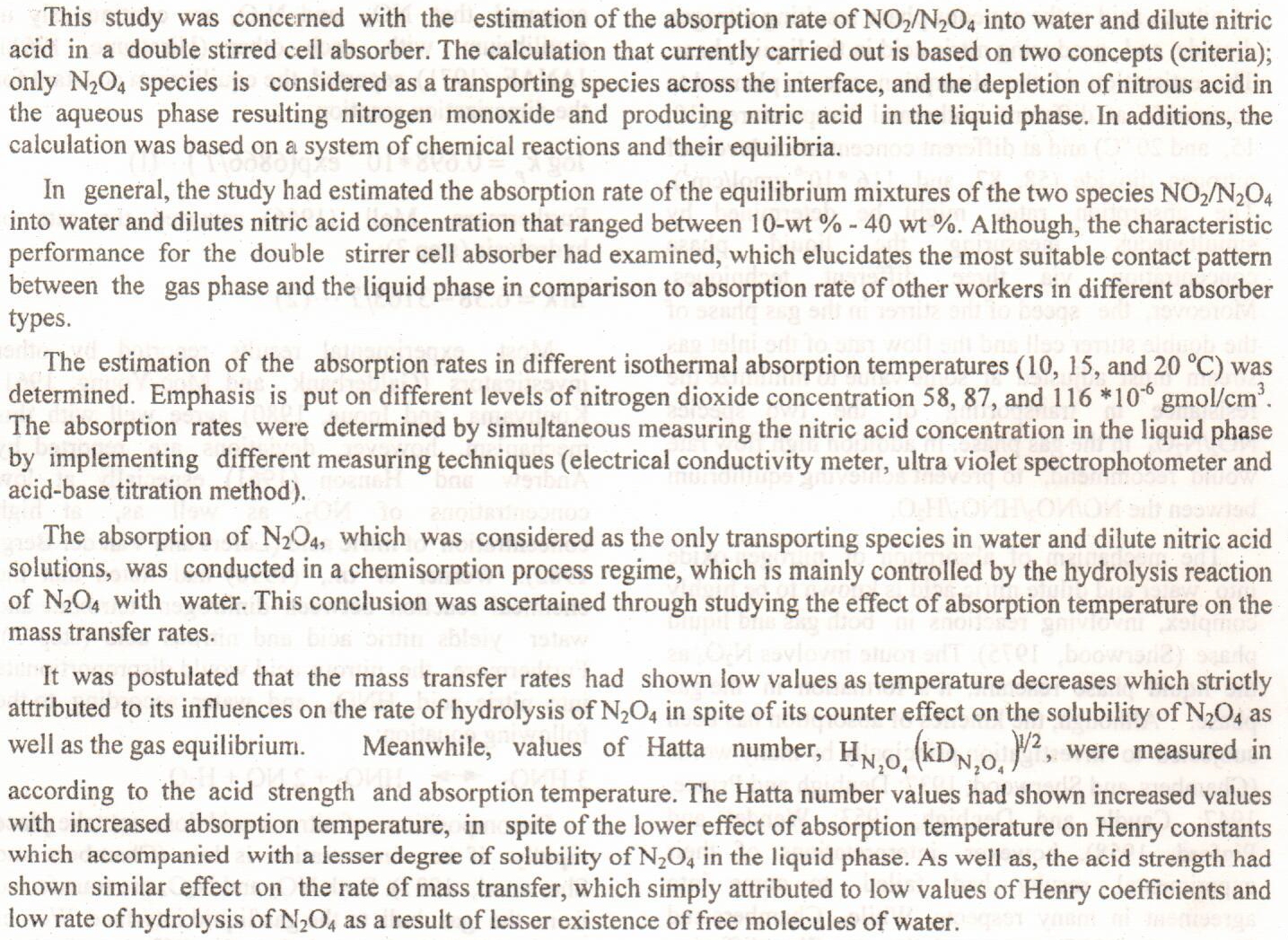
 (4)
(4)
 (2)
(2)
Background: Antioxidant, sedative, anticancer, and antibacterial properties are among the numerous pharmacological characteristics of Galium verum. Aim: The primary goal of this research was to investigate the therapeutic effects of G. verum extract against folic acid-induced acute kidney injury (AKI). Materials and methods: 18 male rats were assigned into three groups: Control, AKI, and G. verum. AKI was induced by a dose of folic acid (250 mg/kg, i.p.) while G. verum (250 mg/kg) was administrated for 7 consecutive days. Results: G. verum methanol extract contains flavonoids, anthraquinones, tannins, iridoids, triterpen
... Show MoreIn this study water quality index (WQI) was calculated to classify the flowing water in the Tigris River in Baghdad city. GIS was used to develop colored water quality maps indicating the classification of the river for drinking water purposes. Water quality parameters including: Turbidity, pH, Alkalinity, Total hardness, Calcium, Magnesium, Iron, Chloride, Sulfate, Nitrite, Nitrate, Ammonia, Orthophosphate and Total dissolved solids were used for WQI determination. These parameters were recorded at the intakes of the WTPs in Baghdad for the period 2004 to 2011. The results from the annual average WQI analysis classified the Tigris River very poor to polluted at the north of Baghdad (Alkarkh WTP) while it was very poor to very polluted in t
... Show More (3)
(3)
 (3)
(3)
A metal-assisted chemical etching process employing p-type silicon wafers with varied etching durations is used to produce silicon nanowires. Silver nanoparticles prepared by chemical deposition are utilized as a catalyst in the formation of silicon nanowires. Images from field emission scanning electron microscopy confirmed that the diameter of SiNWs grows when the etching duration is increased. The photoelectrochemical cell's characteristics were investigated using p-type silicon nanowires as working electrodes. Linear sweep voltammetry (J-V) measurements on p-SiNWs confirmed that photocurrent density rose from 0.20 mA cm-2 to 0.92 mA cm-2 as the etching duration of prepared SiNWs increased from 15 to 30 min. The
... Show More (17)
(17)
Recycling process presents a sustainable pavement by using the old materials that could be milled, mixed with virgin materials and recycling agents to produce recycled mixtures. The objective of this study is to evaluate the impact of water on recycled asphalt concrete mixtures, and the effect of the inclusion of old materials into recycled mixtures on the resistance of water damage. A total of 54 Marshall Specimens and 54 compressive strength specimens of (virgin, recycled, and aged asphalt concrete mixtures) had been prepared, and subjected to Tensile Strength Ratio test, and Index of Retained Strength test. Four types of recycling agents (used oil, oil + crumb rubber, soft grade asphalt cement, and asphalt cement + Su
... Show MoreThe study aims mainly to evaluate the performance of Sharq Dijila water treatment plant in removing turbidity for the period of 1-4-2001 to 31-3-2004. Daily data for turbidity of raw, clarified, filtered, and supplied water were analyzed. The results of the study showed that there is a wide variation in turbidity levels of raw water fluctuating between 10-1000 NTU with mean value of 41.3 NTU. Turbidity values of the clarified water varied between 1.4-77 NTU. Based on the turbidity value of 10 NTU and 20 NTU (the design maximum turbidity) the readings gave an acceptable percentage of 32.4% and 86% respectively. The turbidity of filtered water ranged between 0.2-4.5 NTU which are completely in compliance with Iraqi and WHO standards. In ac
... Show More
